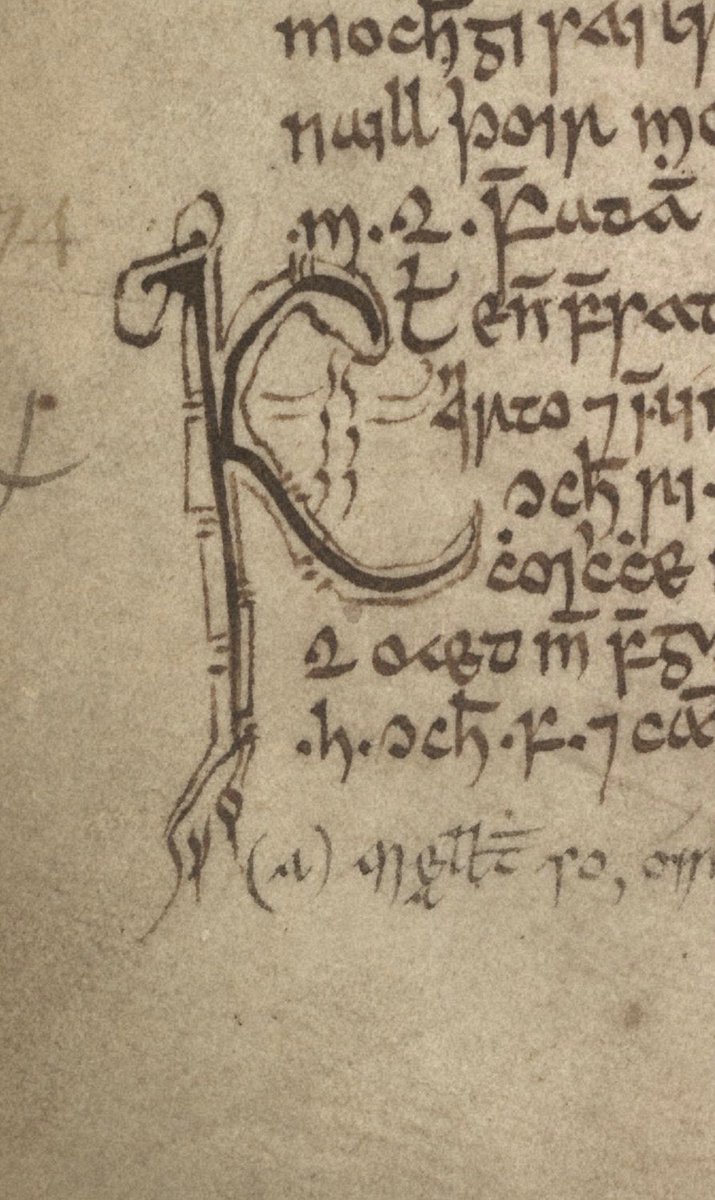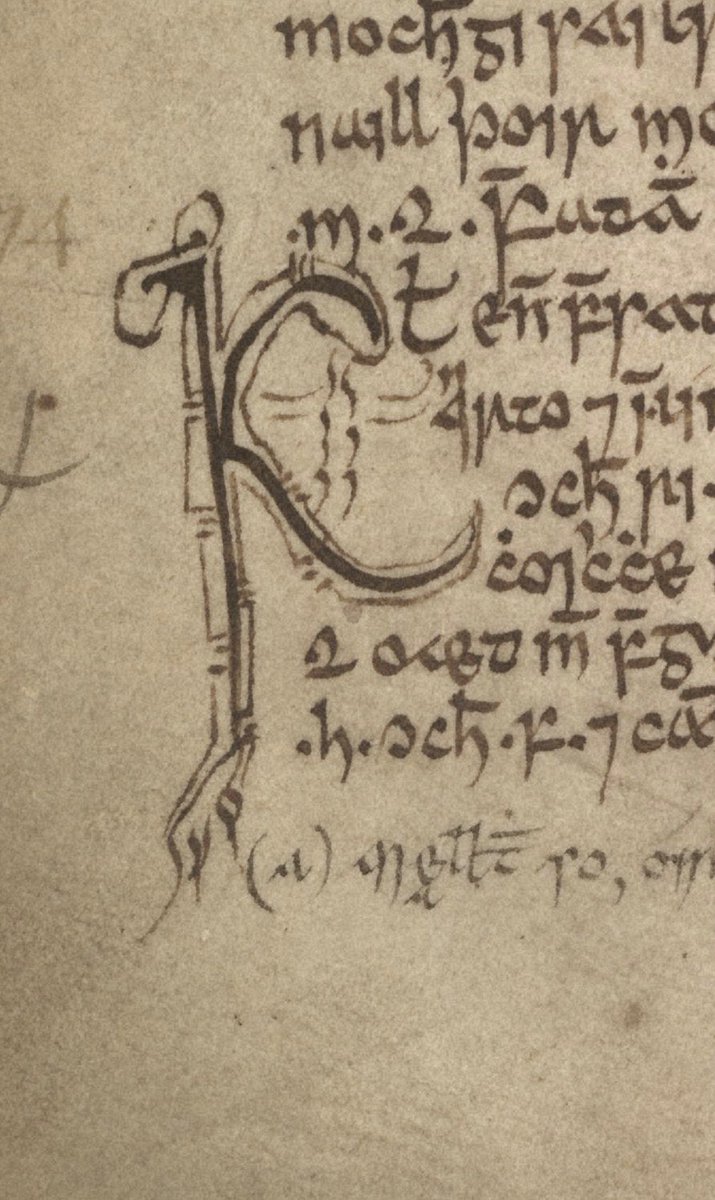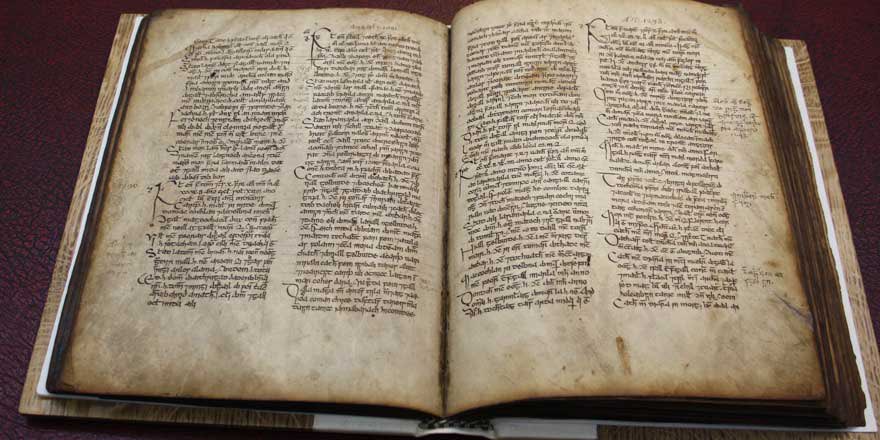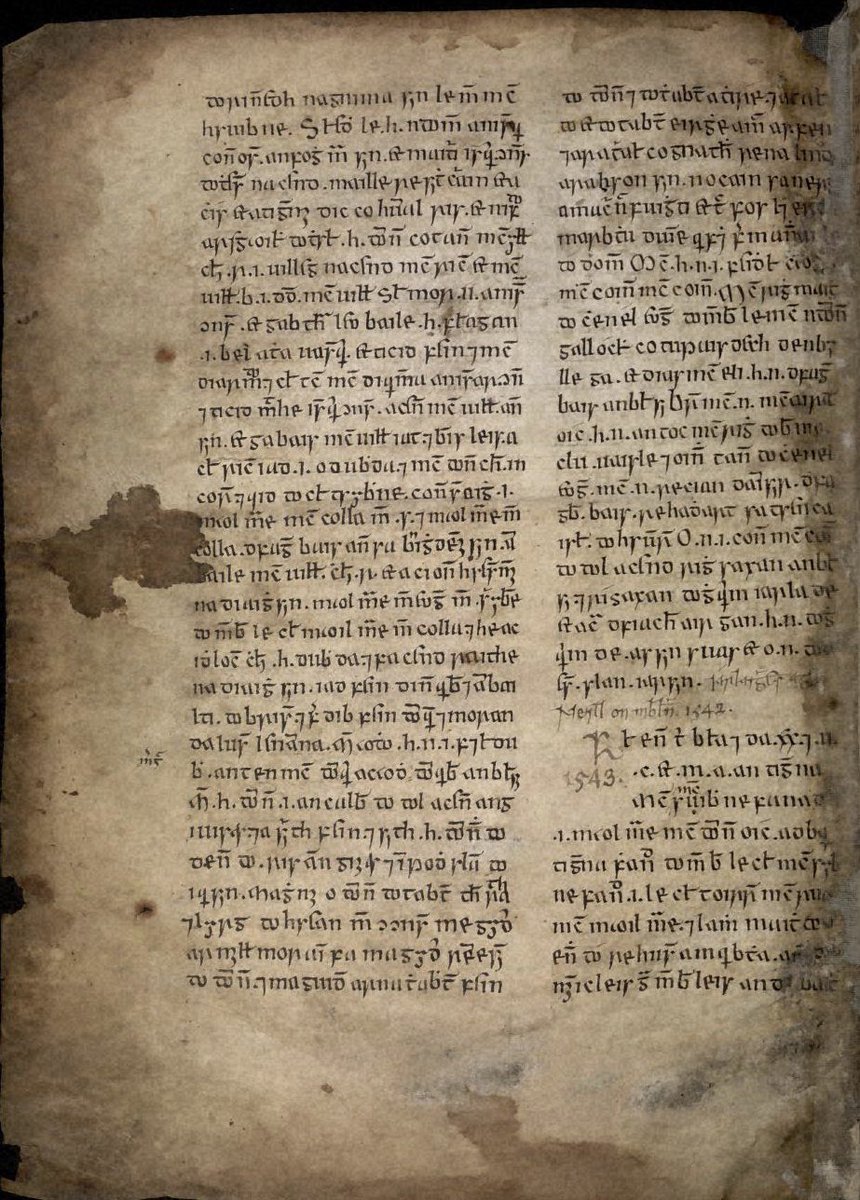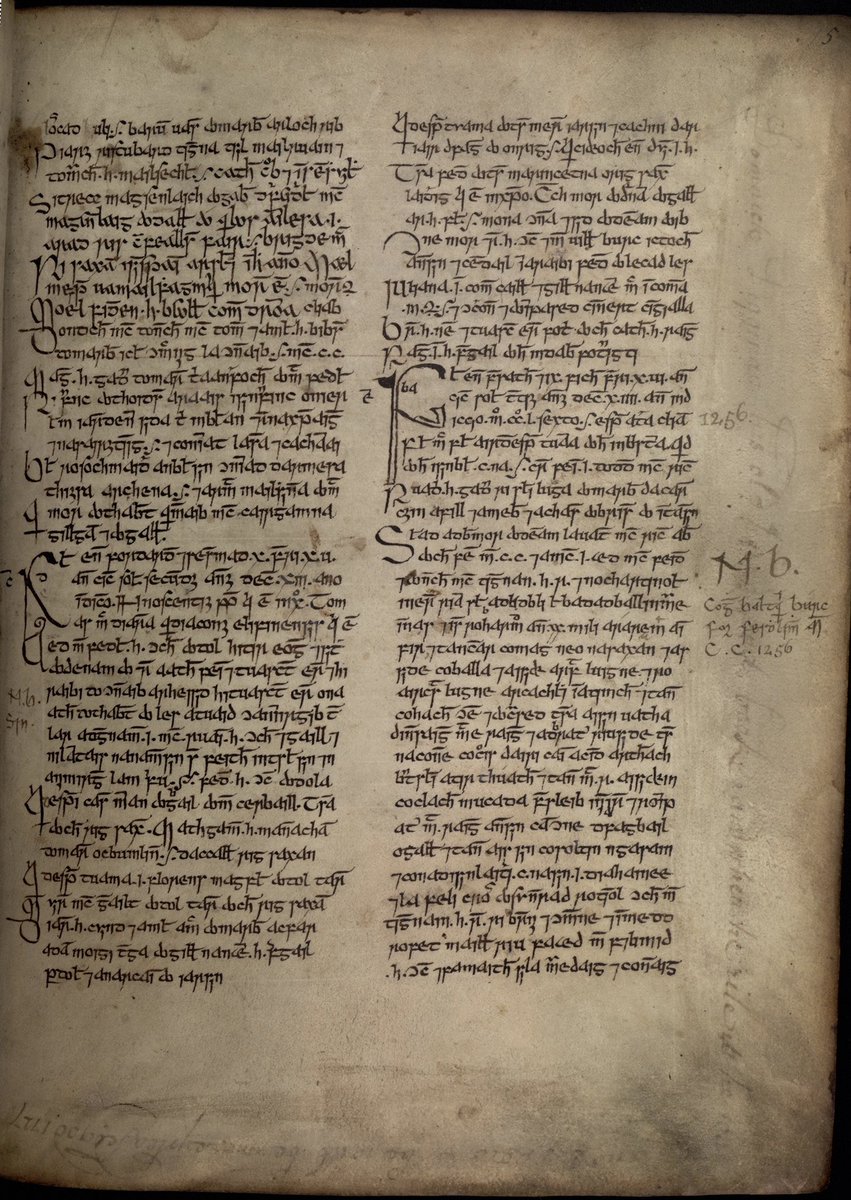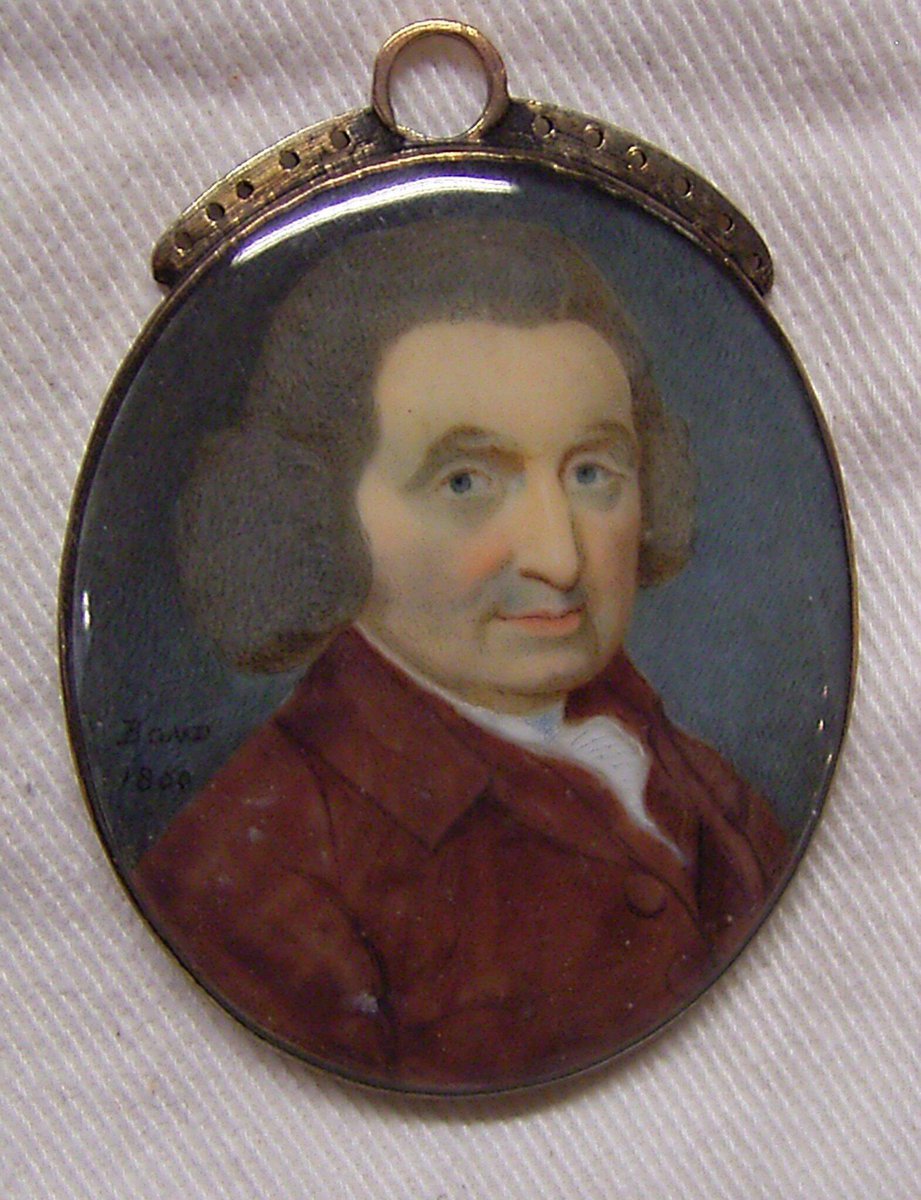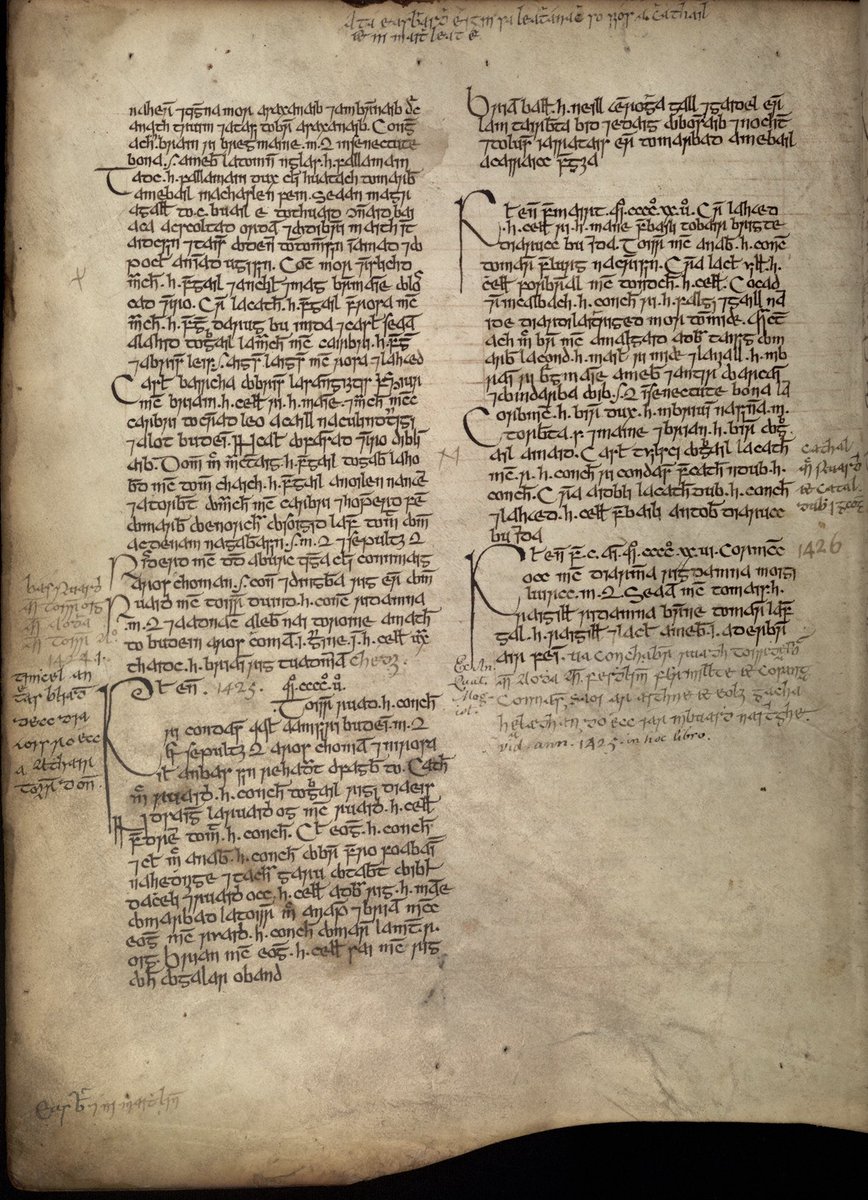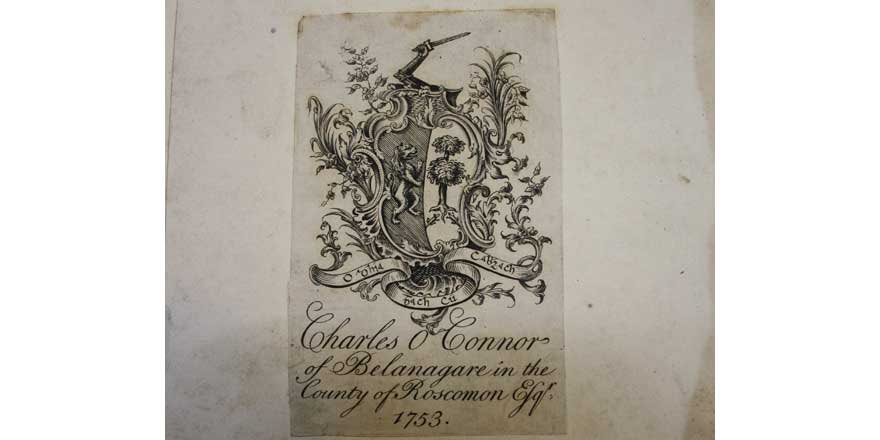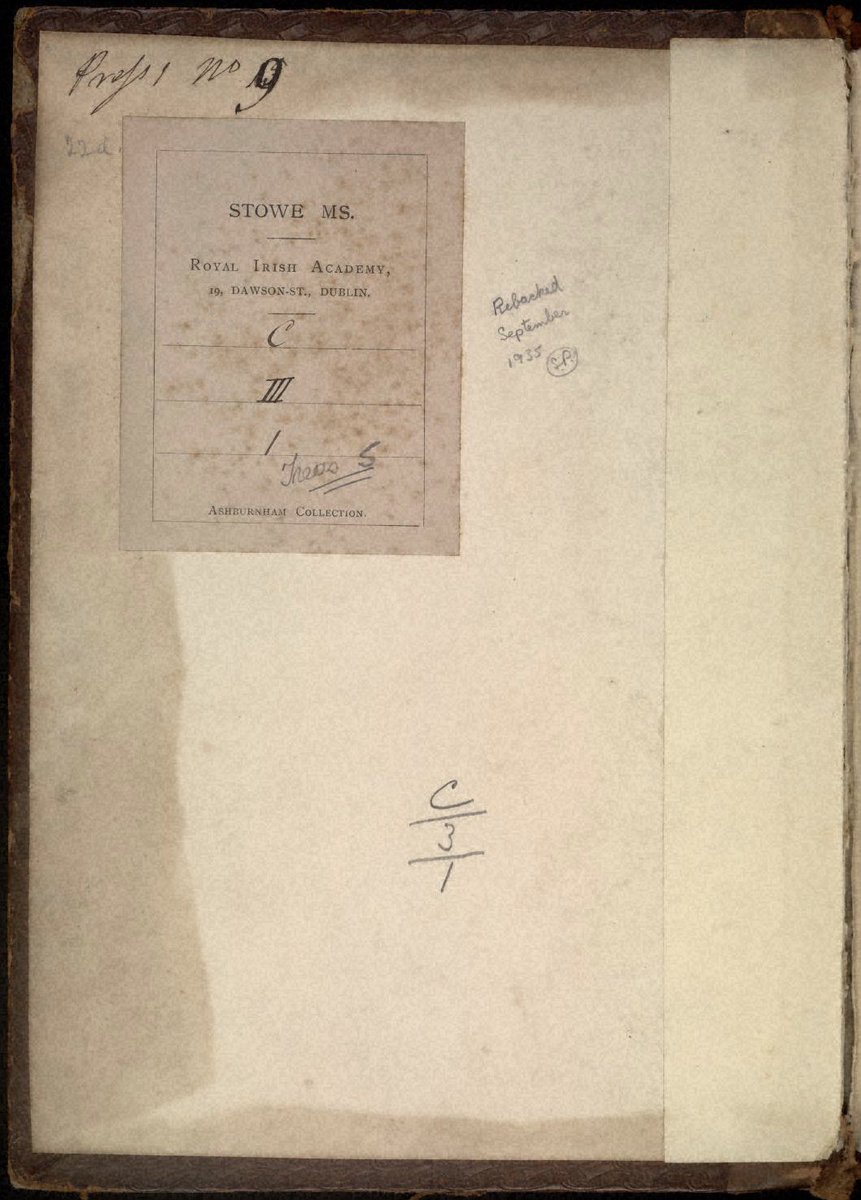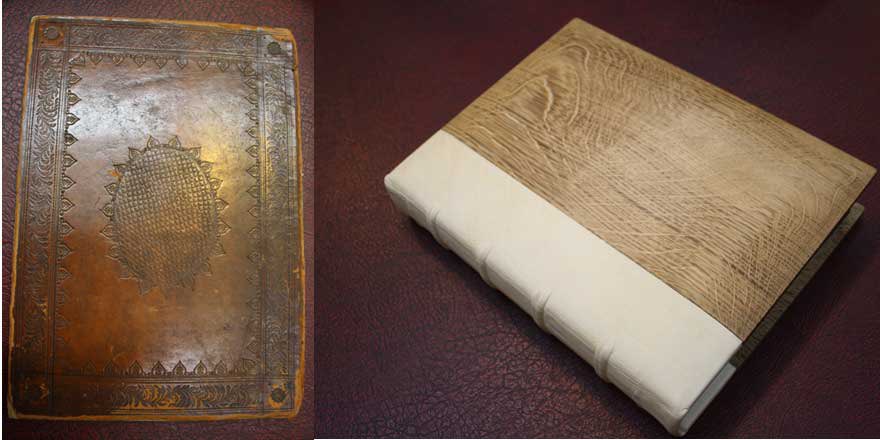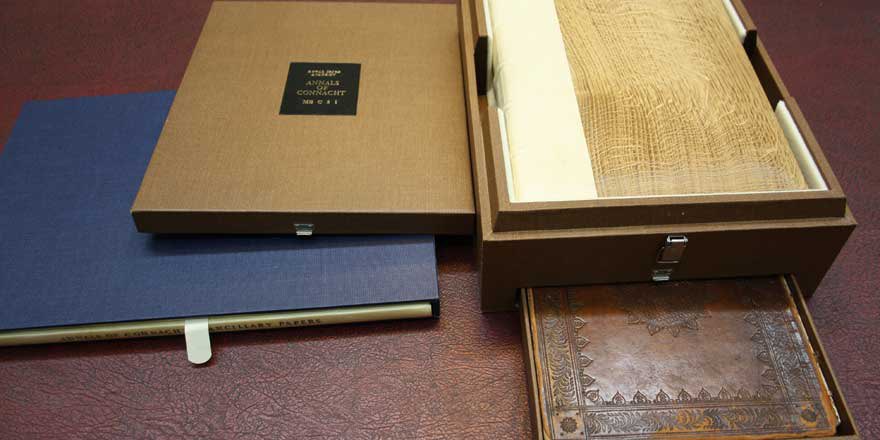This week (by popular vote!) we’ll take a look at the Annals of Connacht. This unique manuscript (RIA MS C iii 1) records episodes in the history of Gaelic Ireland from A.D. 1224 to A.D. 1544, with one later entry for A.D. 1562. #AnnalsofConnacht
The Annals of Connacht opens in the year 1224 - a year which sounds as bad as 2020! …
‘A heavy and terrible shower fell …brought about disease and very great sickness among the cows & beasts of those regions after they had eaten grass & leaves; and when men drank of the milk of these cattle and ate of their flesh, they suffered internal pains & various diseases’
Written 1468-1562 the Annals are thought to derive from older sources, the work of the learned family of Ó Maoilchonaire, hereditary historians to the O’Connors of Connacht. Emphasis throughout on the history of the O’Connors. Opens with entry on Cathal Crobderg O’Connor d.1224.
... ‘Nor was it strange that these portentous things should happen in Connacht at that time, for a great affliction befell the country then, the loss of Cathal Crobderg son of Toirrdelbach O Conchobair, king of Connacht …’
The Annals of Connacht overlaps with that of the Annals of Loch Cé (Lough Key) (TCD MS 1293) they may be the work of the same family. The Loch Cé Annals were owned and copied for Brian MacDiarmata of the monastery of the Holy Trinity at Lough Key. Image: McDermotts Castle
... For more on this connection see O’Dwyer ‘The Annals of Connacht and Loch Cé and the monasteries of Boyle and the Holy Trinity’ PRIA, Vol. 72 (1972) pp.83-110.
There are a number of references to Lough Key in the Annals of Connacht. Here’s entry for the year 1466 notes ‘The monastery of Holy Trinity Island in Loch Key and the image of the Trinity were burned by a lighted candle carried by a canon's wife.’
… Incidentally, the entry just before this one reads: ‘Pestilencia magna a nAth Cliath & a Mide & i Laignib.’ / ‘A great plague in Dublin, in Meath and in Leinster.’
Each entry (i.e. year) in the Annals of Connacht is uniformed, each containing a particular series of chronological data. Each entry begins with ‘Kł’ standing for Kalendae Ianuarii, i.e. 1 January.
Each entry includes day of the 1st January, age of the moon on that date, year’s place in the Cycle of Nineteen (Lunar), year’s place in current Indiction (15 year cycle), year’s place in Solar Cycle, date, Leap year or common. 1224 begin ...
‘1st January on Monday and the seventh day of the moon; this was the ninth year of the Cycle of Nineteen and the twelfth year of the Cycle of Indiction and of the Solar Cycle, and Leap-year. The twelve hundred and twenty-fourth year since the incarnation of our Lord Jesus Christ’
‘Calann Enair for Luan & sechdmad uathad esca fuirri & in nomad bliadain don chiccal noedecdai hi acus in dara bliadain x. don cical indictionis acus don cical tsholardo hi & bliadain bisig hi. Anno ab incarnatione Domini nostri Iesu Christi mille cc. xx. iiii’
From the year 1226 the scribes include another series of chronological data …
The signs on the left of the K indicate years in which the embolism or intercalary lunar month are added. The letters on the right indicate the Cyclus Dominicalis - the Sunday Letters, marking the week day of the 1st January and indicates Leap Years - which have 2 letters not 1.
Later in the manuscript the initial K has been lightly written in or not in at all - for some reason the scribe has not gone back to add in the initial. You will also notice the handwriting is different to other folios we have looked at so far - we’ll get on to scribes later on!
The Annals of Connacht is the work of three scribes, only two identify themselves: Paitin and Sean Riabhach. No surname is given, but they were probably members of the learned family of Ó Duibhgeannáin. ...
Sean Riabhach [O Duibhgheannáin], wrote folios 66, col. b - 90 recto col. b. He writes on f.85v: ‘Misi Seán & is misdi me gan Dolp agam.’ (‘I am John and I am the worse for the absence of Dolp’).
The name “Dolp” is an Ó Duibhgheannáin name
The name “Dolp” is an Ó Duibhgheannáin name
If you have been following you will know this week we are looking at the Annals of Connacht - Today: Provenance. #AnnalsofConnacht
The Annals were in the hands of the Ó Duibhgeannáin family, north Connacht, up to the 1720s. The O’Duigenan family of historians were associated with two main locations in the later medieval period – Kilronan, Co. Roscommon & Castle Fore near the renowned monastic site of Fenagh
Cat. note ‘entry in prominent position of Duibgeand mac Dubhthaigh Uí Dhuibhgheannáin's obit under year 1542 suggests, in combination with the incidence of the Ó Duibhgheannáin name “Dolp” 7 the proof of later ownership, that these Annals are the work of Ó Duibhgheannáin scribes’
On folio 15r there is the signature of ‘Dominick Digginan’ and the date 1727, the manuscript had probably been in the continuous ownership of that family for almost 200 years.
It was subsequently owned by the Duke of Buckingham and the Earl of Ashburnham. It was one of the 156 ‘Stowe’ manuscripts of Irish interest presented by the British Government to the Royal Irish Academy in 1883.
The older binding dated from 1794. It was in calf, blind-tooled and with gilt lettering on the spine: ‘Irish Ms. No. IX Ann. Connac. Saec. XVI’. Inside the old front cover was a label ‘Stowe MS (Ashburnham Collection), Press 1, No. 9’
In 2008-9, the manuscript was disbound and earlier repairs removed. It was rebound in quarter-cut Irish oak boards, covered in alum-tawed calf.
It is kept in a buckram-covered millboard drop-back box, custom-made; the box includes a drawer in the base which holds the C18th binding.
For more information read Dr Bernadette Cunningham’s blog post https://www.ria.ie/news/library-library-blog/annals-connacht-unique-sixteenth-century-manuscript

 Read on Twitter
Read on Twitter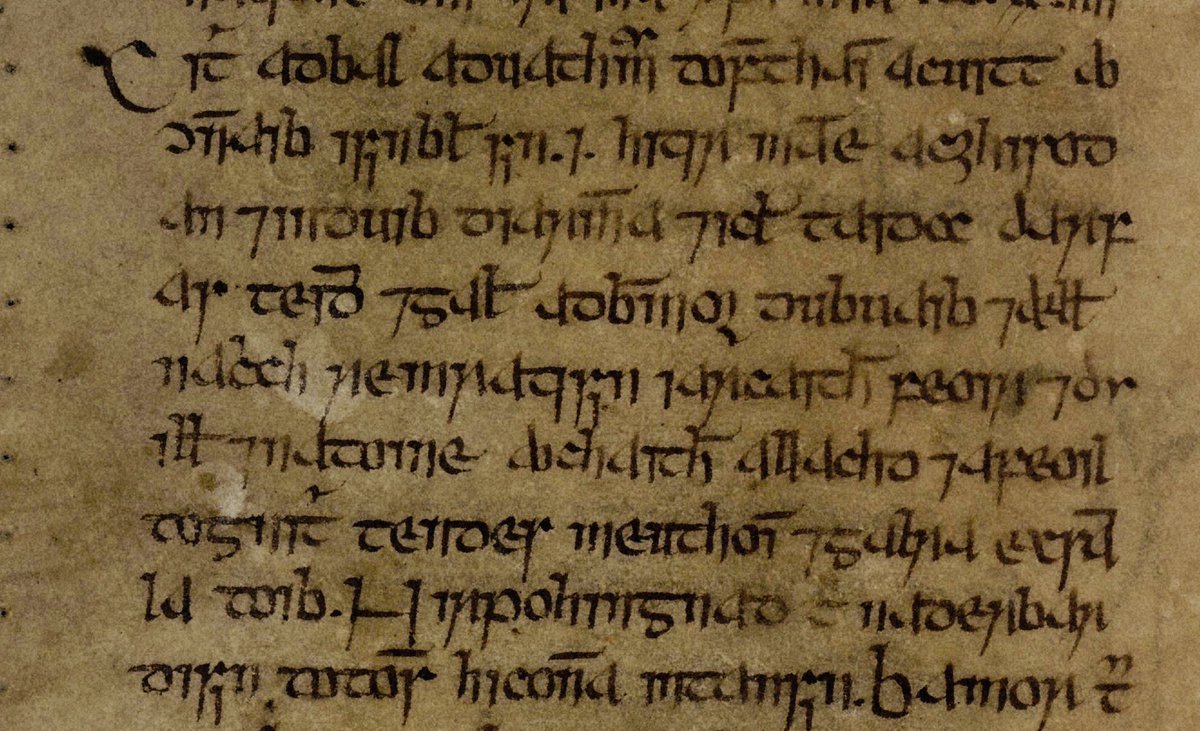
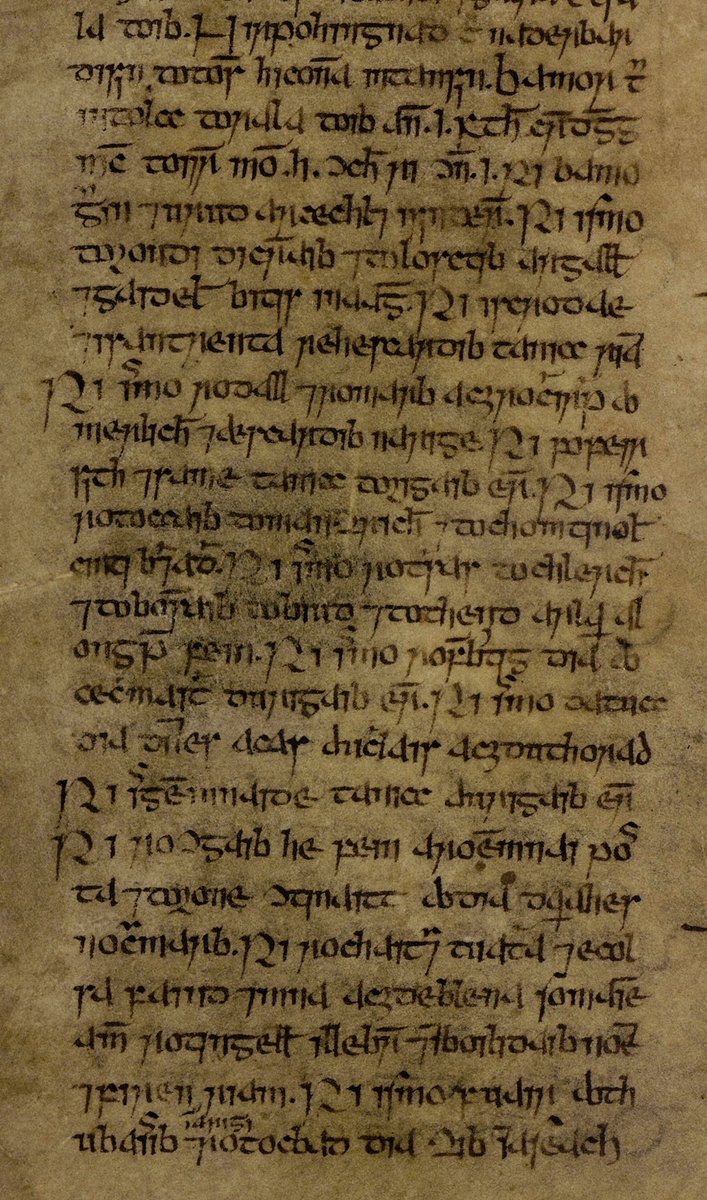
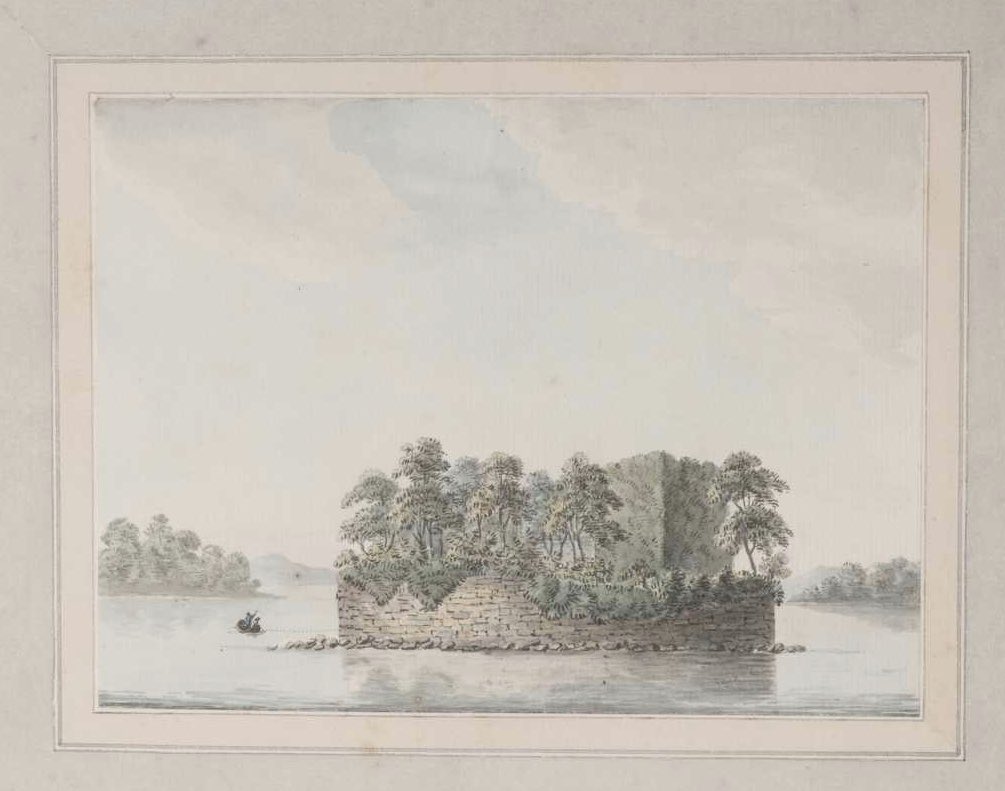


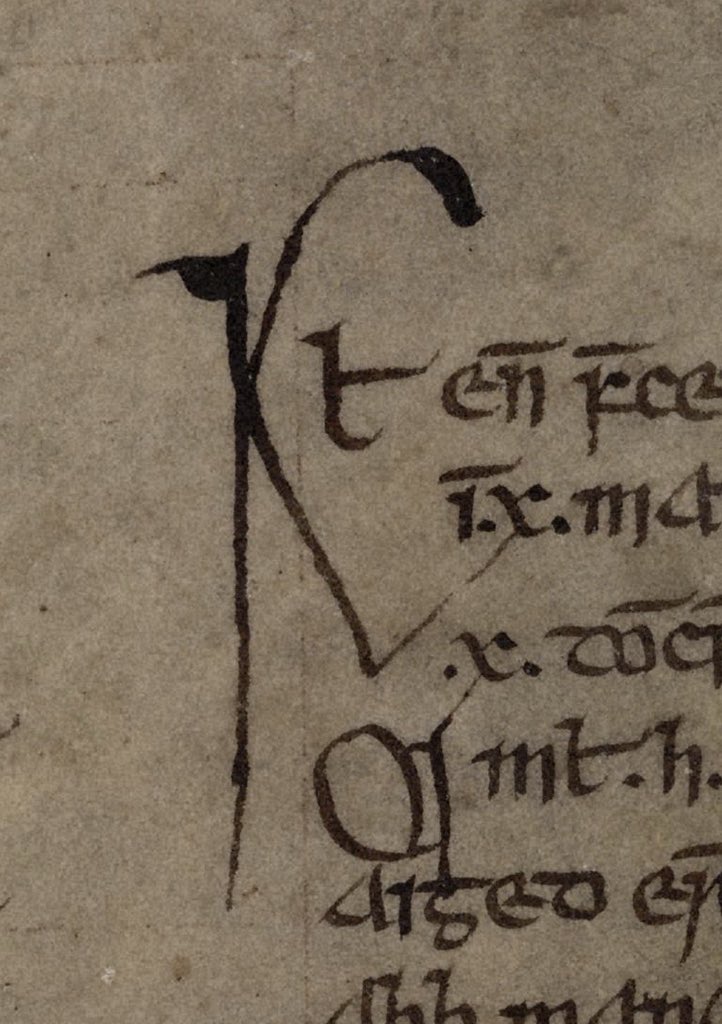
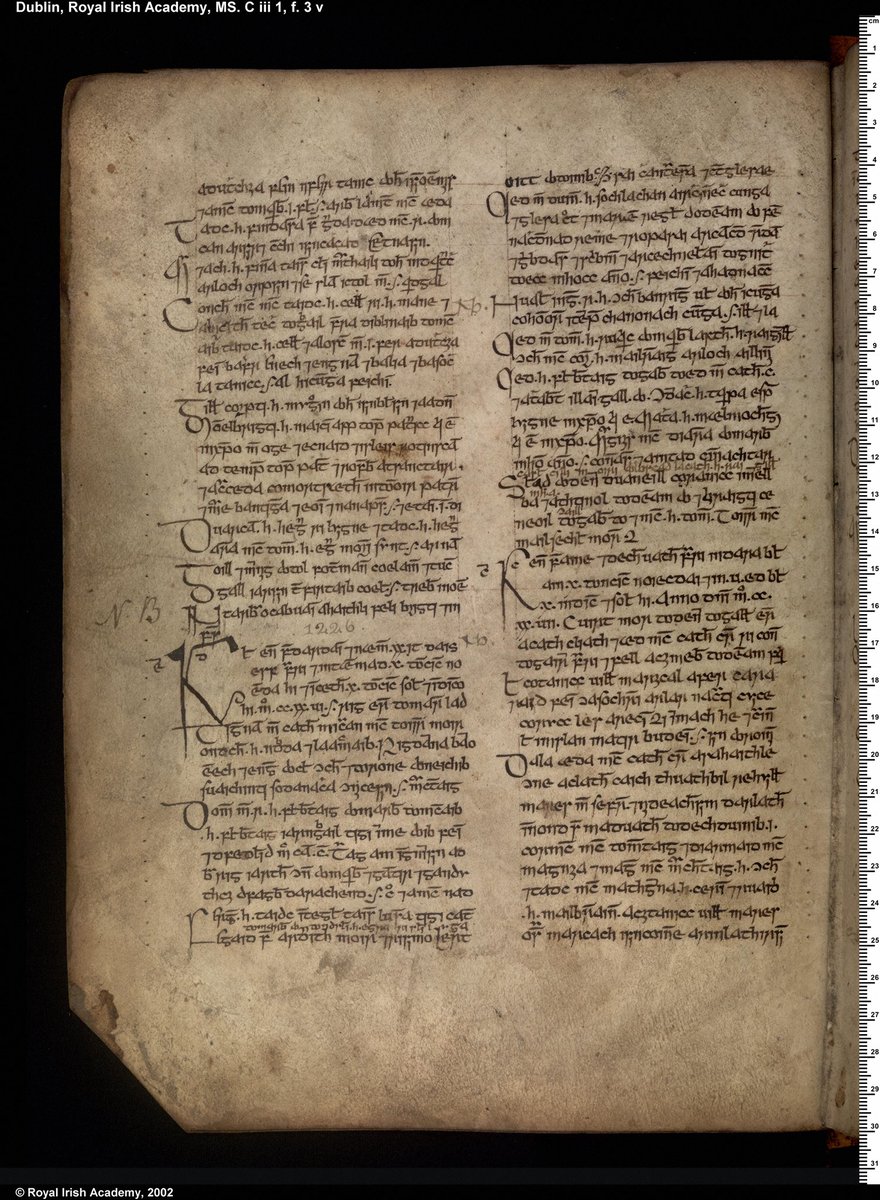
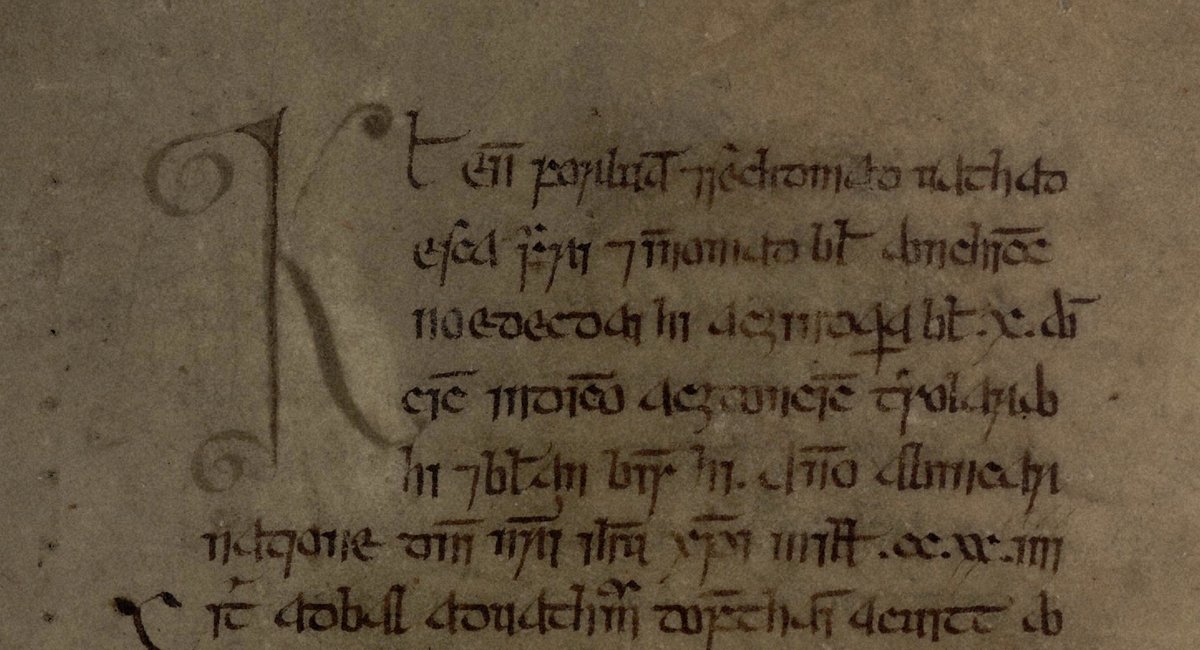
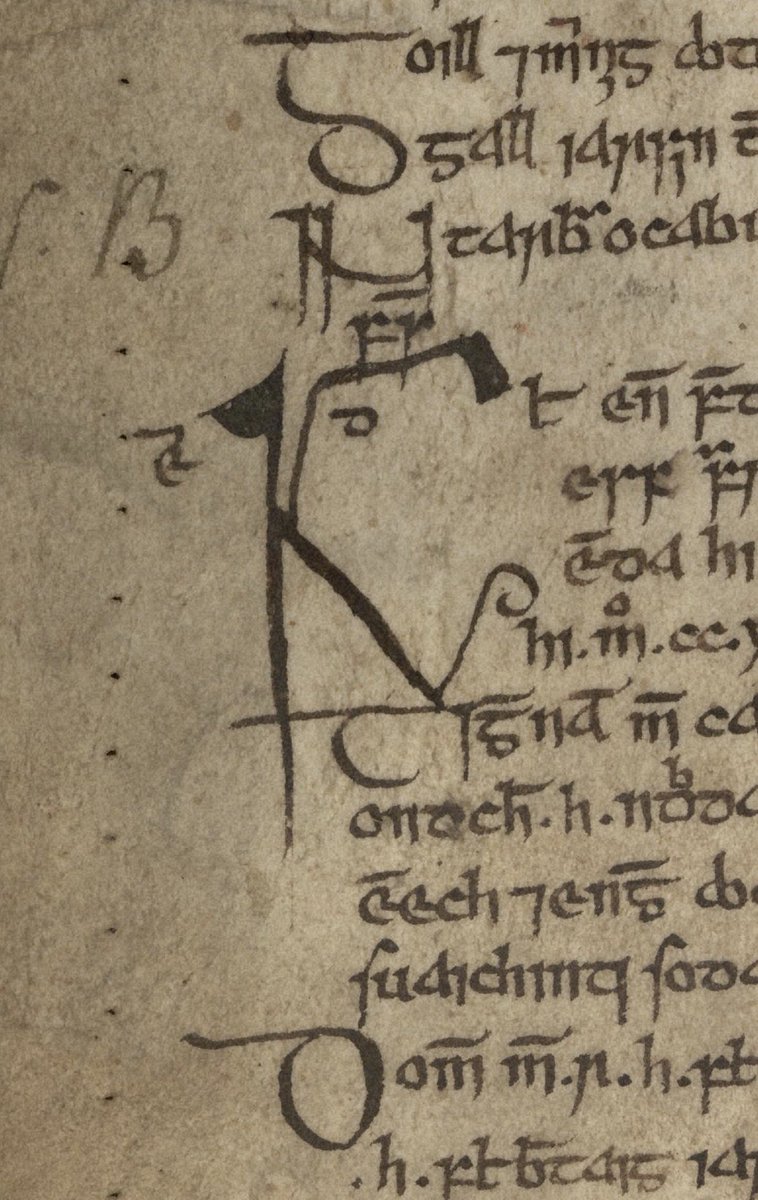
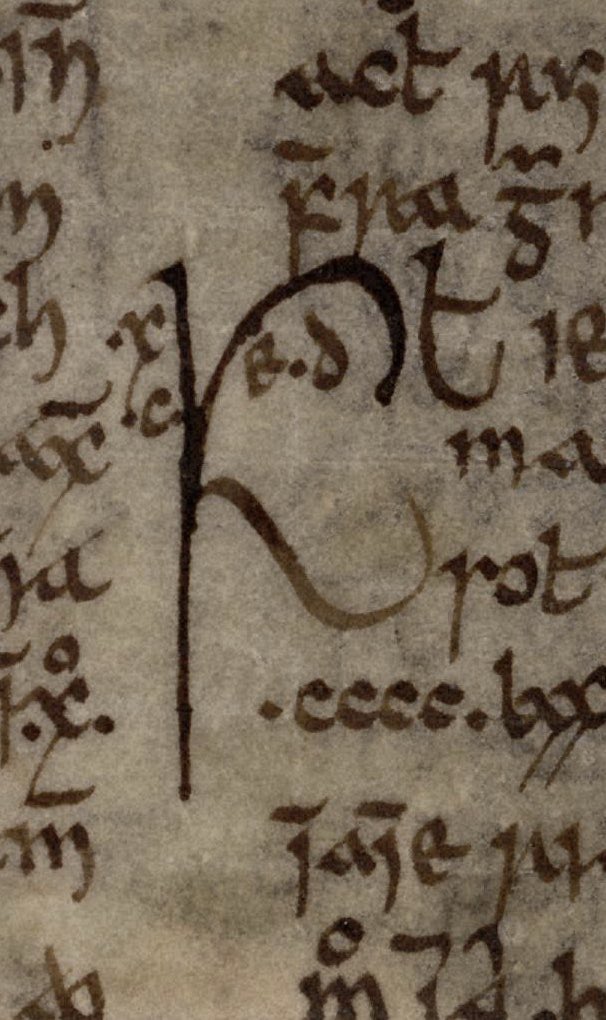
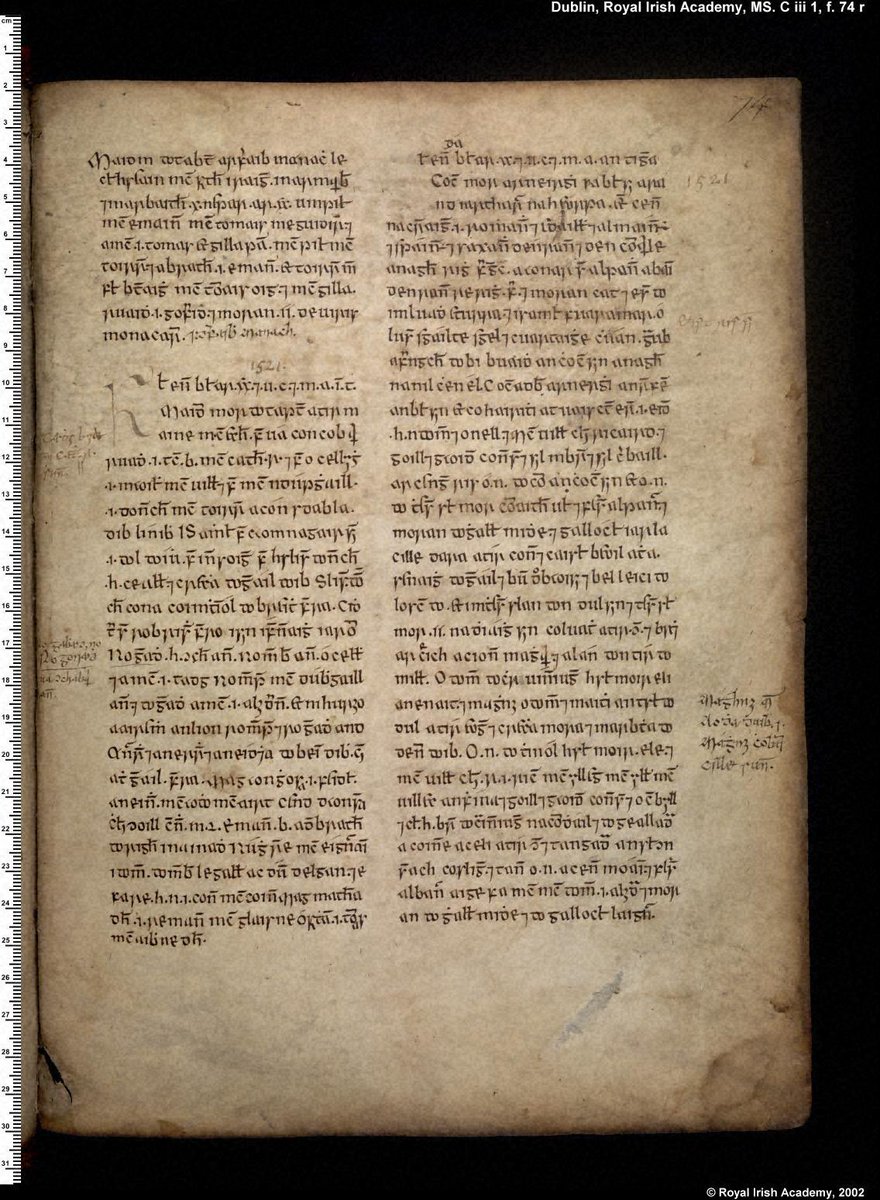
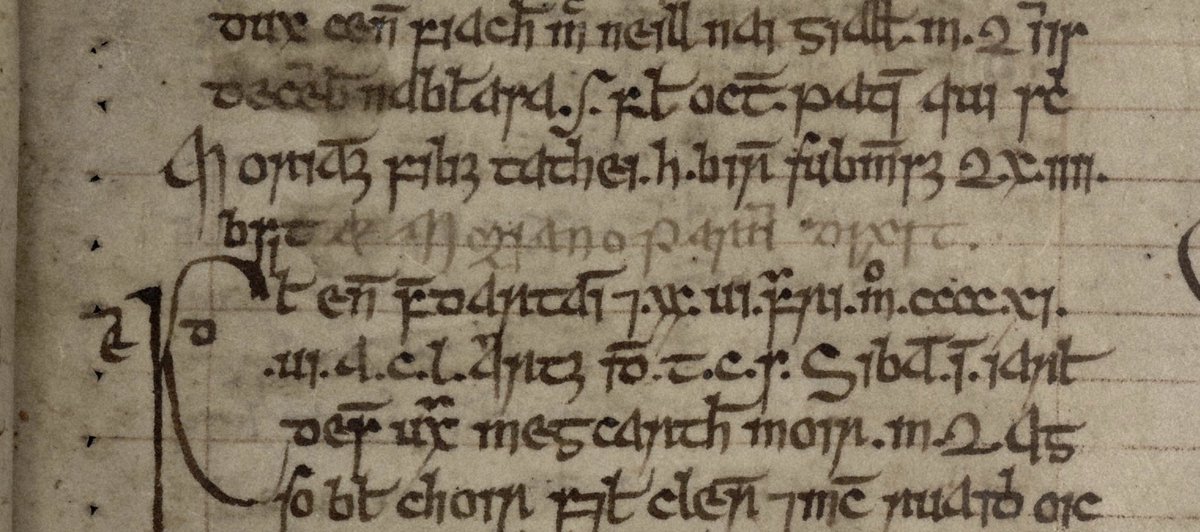
![Sean Riabhach [O Duibhgheannáin], wrote folios 66, col. b - 90 recto col. b. He writes on f.85v: ‘Misi Seán & is misdi me gan Dolp agam.’ (‘I am John and I am the worse for the absence of Dolp’).The name “Dolp” is an Ó Duibhgheannáin name Sean Riabhach [O Duibhgheannáin], wrote folios 66, col. b - 90 recto col. b. He writes on f.85v: ‘Misi Seán & is misdi me gan Dolp agam.’ (‘I am John and I am the worse for the absence of Dolp’).The name “Dolp” is an Ó Duibhgheannáin name](https://pbs.twimg.com/media/EeLbl3NXsAAiy7-.jpg)
